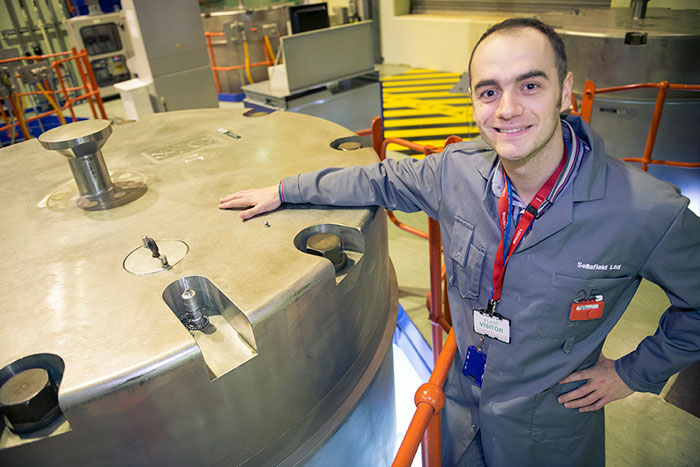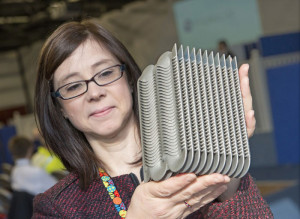Cross your fingers! Sellafield Ltd. in Cumbria, in the North West of England is using 3D scanning and, possibly, 3D printing for disposing nuclear waste! Sellafield is the site of one of the world’s original nuclear power plants. Built in the 1940s, the plant has shifted from producing nuclear energy for war to producing it for peace, until, after numerous controversies, it was finally decommissioned in 2003. Now that the site has spent longer than ten years undergoing the more than £70 billion decommissioning process, at the expense of UK taxpayers, the plant’s operator, Sellafield Ltd., is experimenting with 3D scanning and printing to save time and costs.
Sellafield is in the process of cleaning up its 60-year-old Pile Fuel Storage Pond (PFSP). To transfer the radioactive sludge from the pond to a waste encapsulation plant, the company will be implementing a 40 ton stainless steel Solid Waste Export Flask; however, Sellafield will need to create a new lid for the existing container. Eduard Bordas, Lead Mechanical Engineer, explains, “I was tasked with the job to re-use an existing container and to get a new lid designed with a filling port to allow the sludge to be metered into drums. We recognised early on that is was paramount that the new lid will fit the old body first time. None of the traditional metrology methods available gave us the same confidence that 3D scanning did. 3D scanning was simpler, cheaper and more accurate – basically it provided fit-for-purpose technology that we’re adapting for the nuclear industry at Sellafield.”

Utilizing 3D blue-LED scanning, the team was able to create a model of the lid more quickly and affordably than by other methods. The company’s Head of Metrology, Alistair Norwood, says, “3D scanning is being used to design the new container lid. The scan cost about £3000 versus the estimated £25,000 cost of using a metrology rig. It was also carried out in a fraction of the normal 6 months taken to manufacture such a component using traditional tooling.”
Because PFSP has already used 3D printing to manufacture other parts for the plant, Sellafield is exploring the use of 3D printing to produce other metal and plastic components at the site. The company has already held a conference to examine more ways that they can use 3D printing and scanning. Head of Technical Capabilities, Donna Connor, reflected on how the new technologies could clean up the outdated site:

Personally as a material scientist, 3D scanning and printing is the Holy Grail; the technology offers a huge amount of opportunity that we can exploit to continue the safe and accelerated clean up of the Sellafield site.
The plants at Sellafield are unique and many of them have been used for far in-excess of their original design specification. Our Magnox Reprocessing plant, for example, was originally designed to work for 20 years and now, 50 years later, it is still recycling spent nuclear fuel from power stations around the UK.
With these older plants lots of parts are one-off designs, which makes it both expensive and time consuming to replace parts. If something has to be custom manufactured it could mean a plant is closed down until a part is replaced, and even if we can avoid closing the plant temporarily, we know for certain that the part will be expensive. Using this technology can revolutionise the way we do things, saving time, and money for the taxpayer.
Sellafield has always been a place where we’ve been first to do things. We were home to the world’s first nuclear power station in the 1950s, and continued to lead the way on nuclear energy for generations. It seems fitting that we should be the first nuclear company to be pioneering this new technology.
It’s exciting to see Sellafield use 3D scanning and, probably, printing to help clean up this relic of the 20th Century, particularly given some of the horror stories associated with the site. I just hope that the technologies can meet the challenge!
Source: Sellafield


